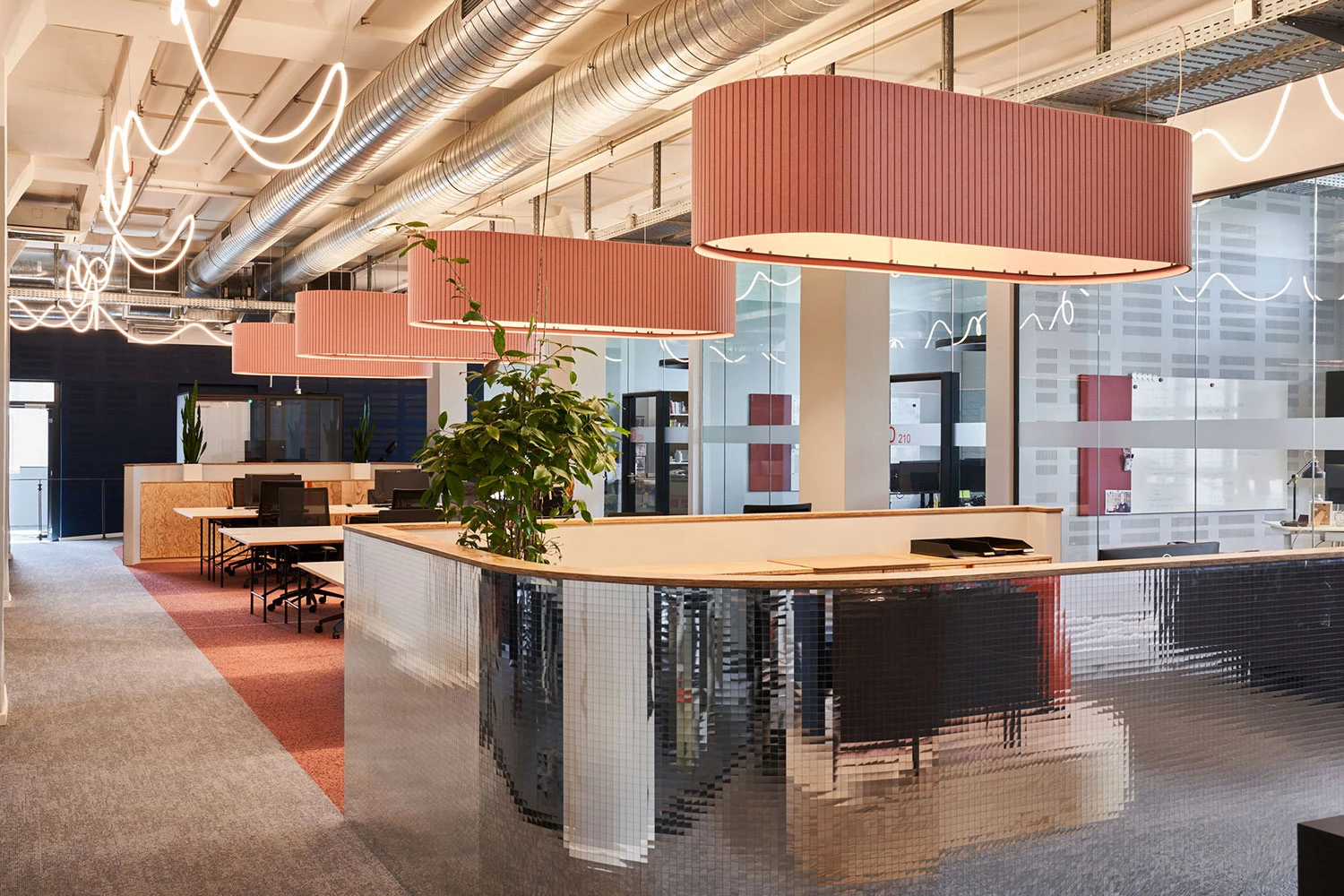Content
COMPLETE ROOM SOLUTIONS WITH INNOVATIVE ACOUSTIC LUMINAIRES
Spaces should inspire, provide comfort and respect the environment. Our innovative acoustic luminaires meet all these requirements in one product. At the same time, we use sustainable materials and environmentally friendly production processes to provide future-proof solutions for modern interior design. Our acoustic luminaires can be customised to meet the specific requirements of your project. We take the combination of functionality, design and sustainability to a new level.
MORE THAN JUST LIGHTING
Acoustic luminaires combine lighting with sound-absorbing materials to improve acoustics in noisy spaces. They reduce echo and background noise, enhancing focus, communication, and comfort in workplaces and hospitality environments..
SUSTAINABILITY AS A DRIVER FOR INNOVATION
IMPACT ACOUSTIC® specialises in developing sustainable materials to help designers overcome acoustic challenges. Using ARCHISONIC® material, they create their own high performance acoustic absorbers that can be used flexibly. Instead of using new materials and wasting resources, they up-cycle disposable plastic bottles. For every square metre of finished material, 88 plastic bottles can be recycled.
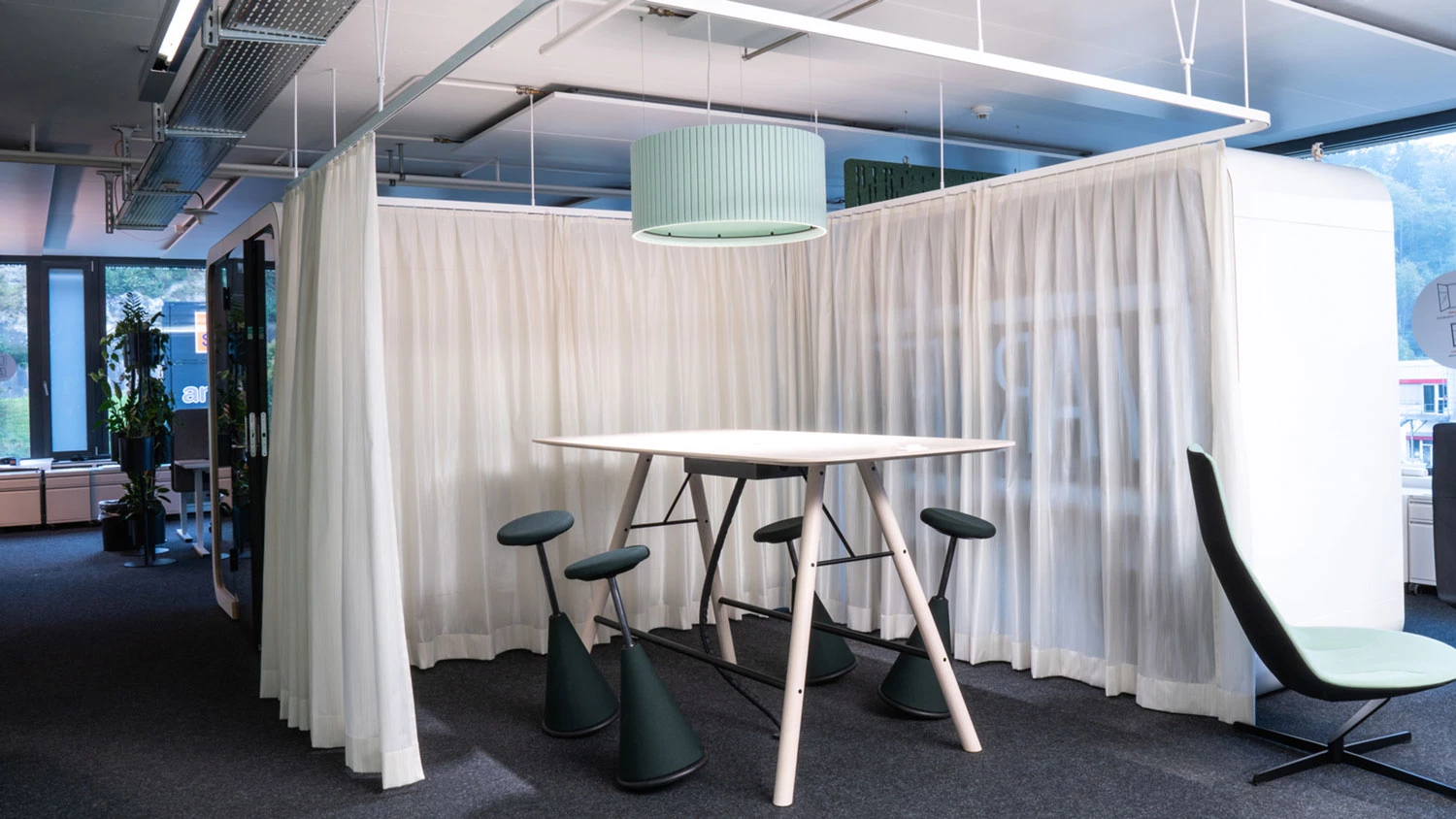
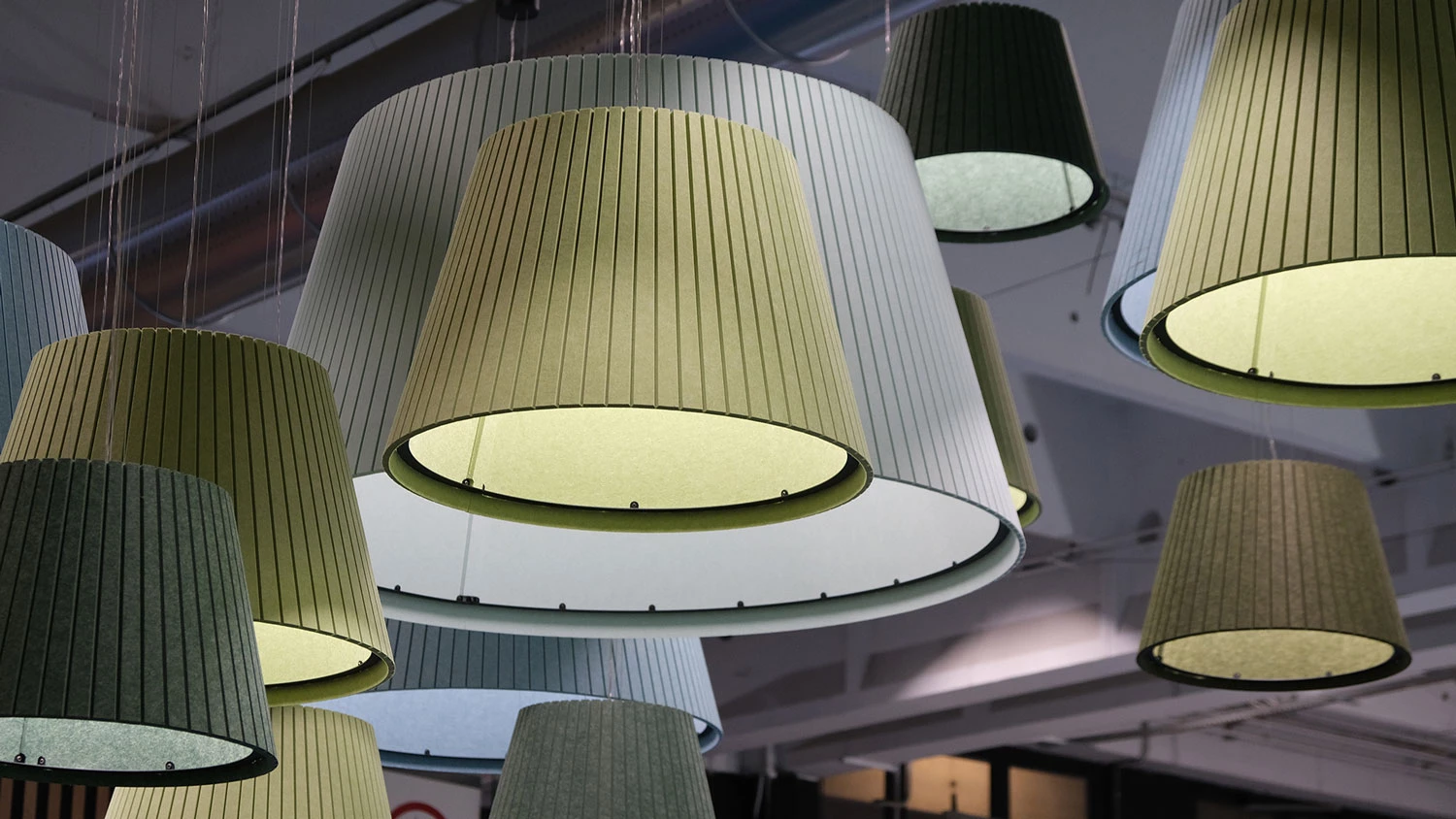
A simplified example
This is a simplified example to get a rough idea for an estimation. This does not replace a full acoustic calculation
Step 1: Know Your Room
Start by measuring or estimating your room size in square meters (m²).
This is usually the floor area, calculated as:
Length × Width = Area
For example:
A meeting room 6 m long and 5 m wide → 6 × 5 = 30 m²
This number will be your reference to estimate how much sound absorption is needed.
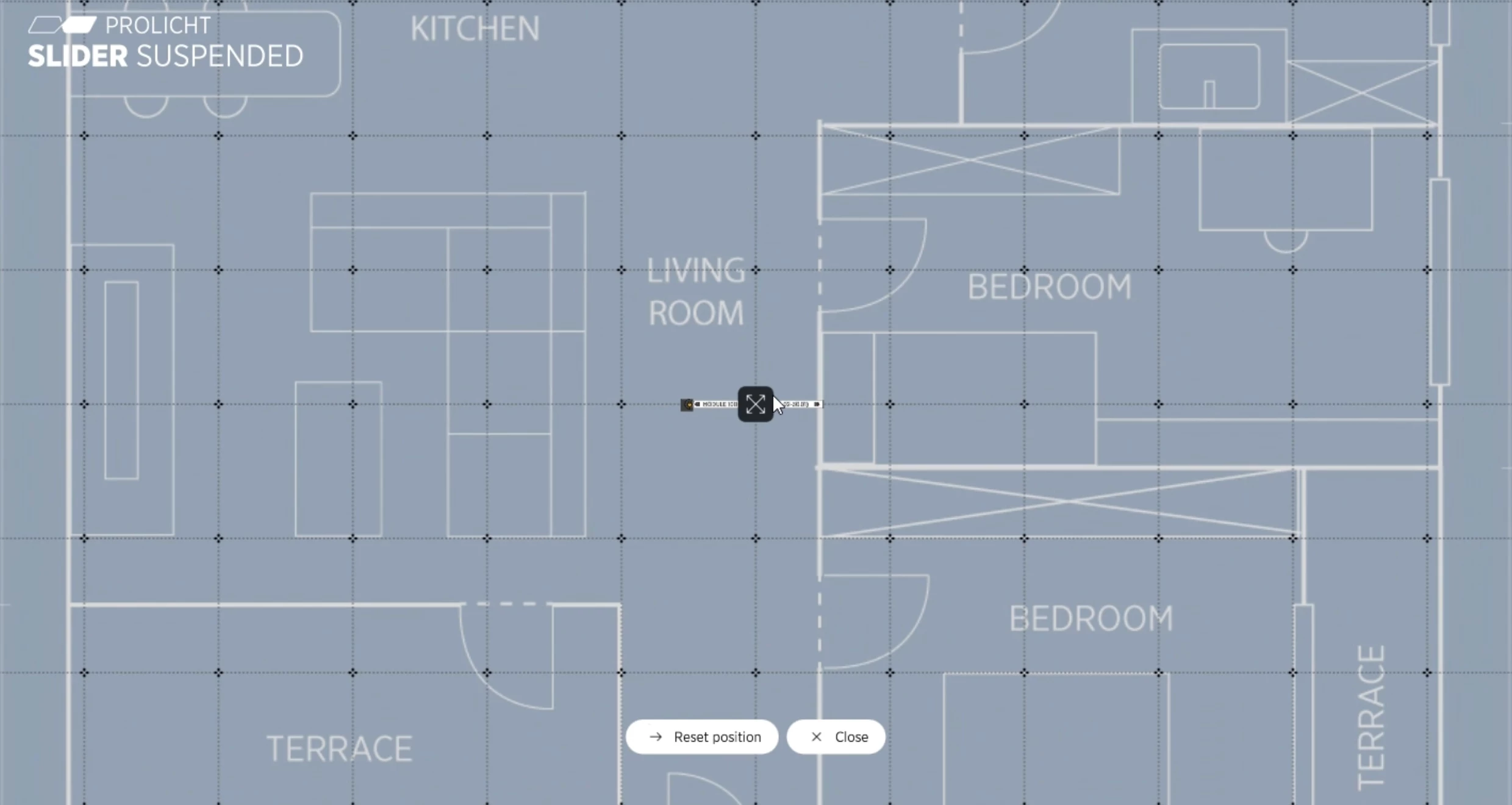
Step 2: Understand What You Need to Absorb
The key metric is total required absorption area.
Rule of thumb:
Recommended absorption area = Room size (m²) × 0.1–0.15
(Minimum for basic control, higher for speech comfort)
Example for 30 m² room:
30 × 0.1 = 3.0 m² (minimum)
30 × 0.15 = 4.5 m² (better comfort)
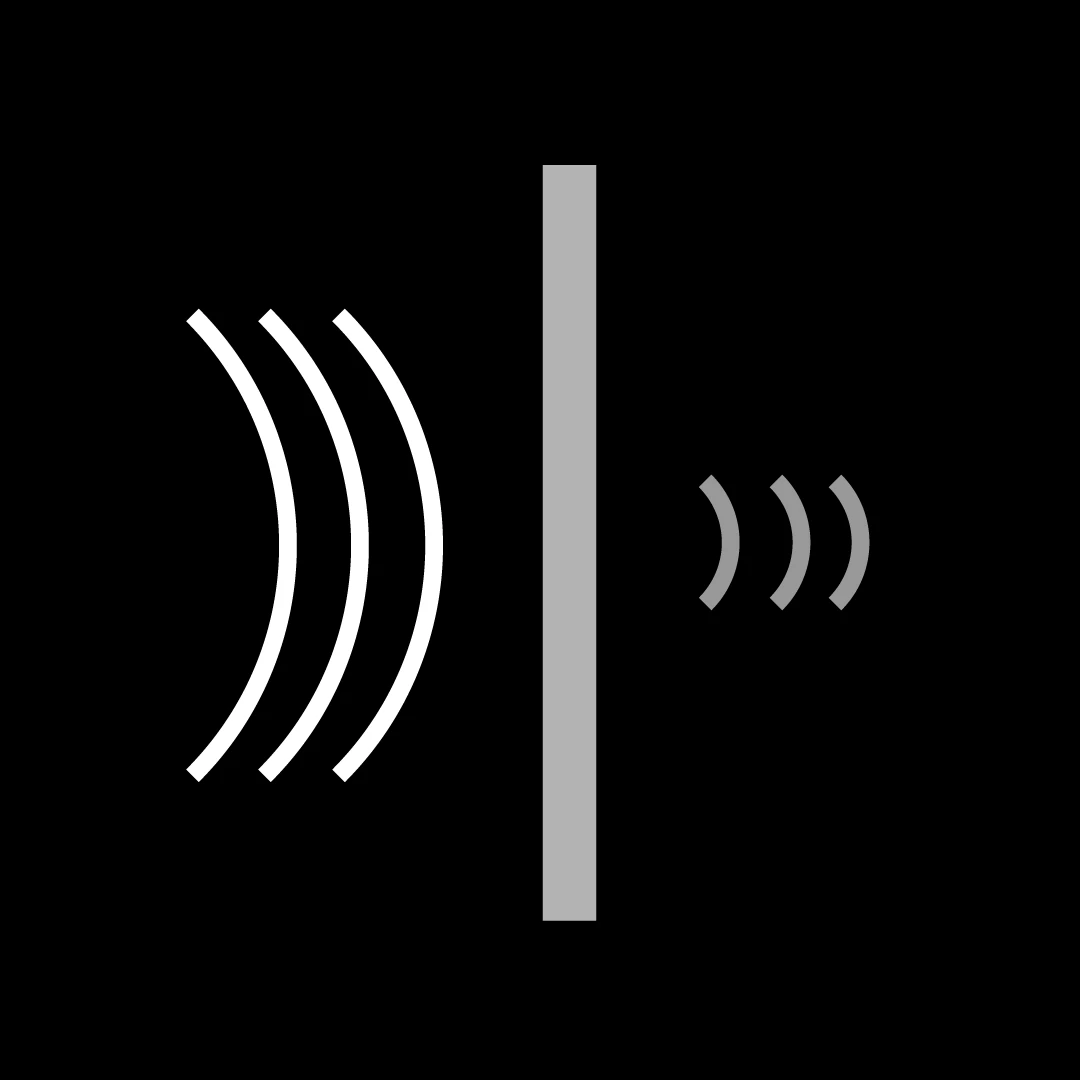
Step 3: Factor in the Sound Absorption Power per Luminaire
Each Prolicht luminaire with 24 mm acoustic material has a tested Aobj (sound absorption area) of up to 0.95 m² at frequencies where human speech is most active (500–4000 Hz).
That means each luminaire acts like almost 1 m² of absorption surface.
This value is tested according to ISO 20189 using pink noise in a hard-walled room—making it easy to apply in real-world spaces.
Use this Aobj value to estimate how many luminaires you'll need.
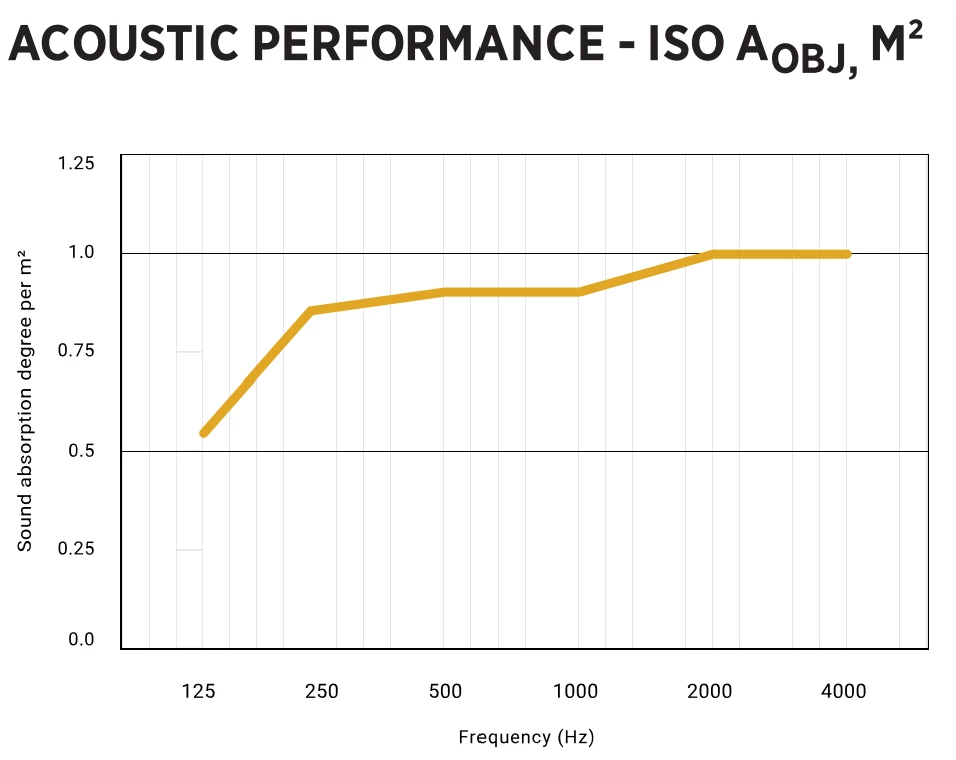
Step 4: Calculate the Number of Luminaires
Number of luminaires = Required absorption ÷ sound absorption degree
Example A – Basic Echo Reduction:
Room: 30 m²
Target: 3.0 m²
3.0 ÷ 0.95 = 3.2 → use at least 4 luminaires
Example B – Better Comfort:
Target: 4.5 m²
4.5 ÷ 0.95 = 4.7 → use 5 to 6 luminaires
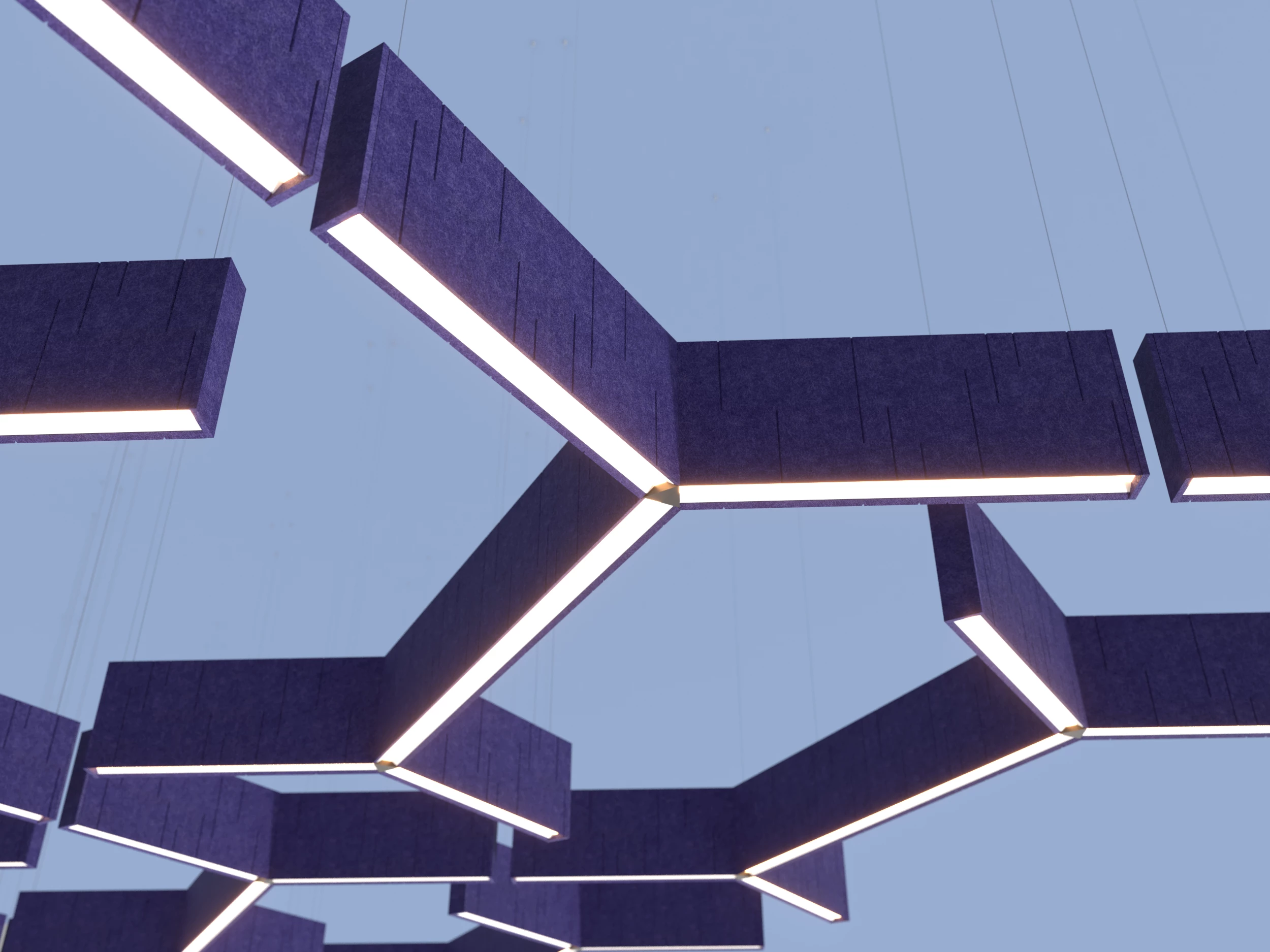
Step 5: Placement Tips
The way you position acoustic elements matters.
Here’s how to get the most from your luminaires:
-
Distribute them evenly across the ceiling to treat the whole room
-
Focus on areas above tables, desks, or seating zones, where voices reflect most
-
Avoid clustering in corners—corners have less acoustic activity
-
In long or irregular rooms, break them into “zones” and treat each zone equally
Also consider combining ceiling luminaires with other acoustic elements (e.g., wall panels) for very large or noisy spaces.
